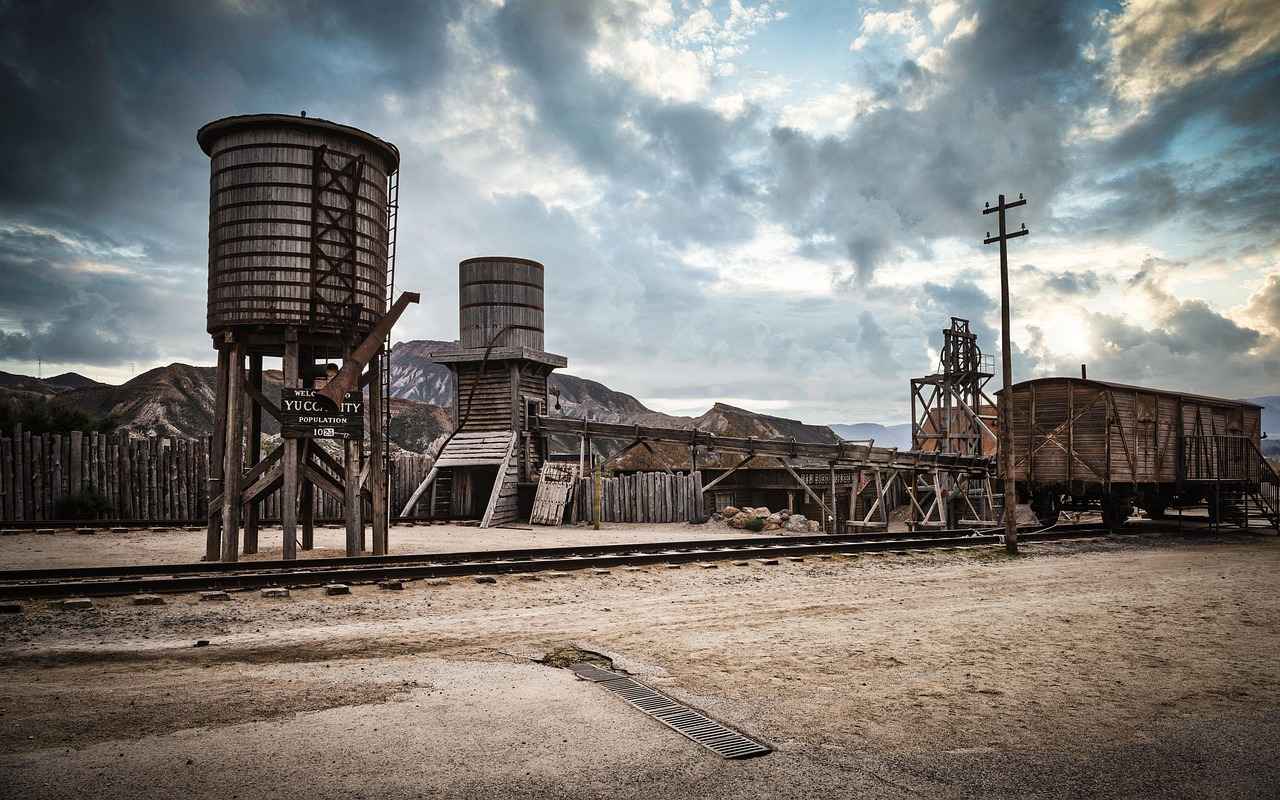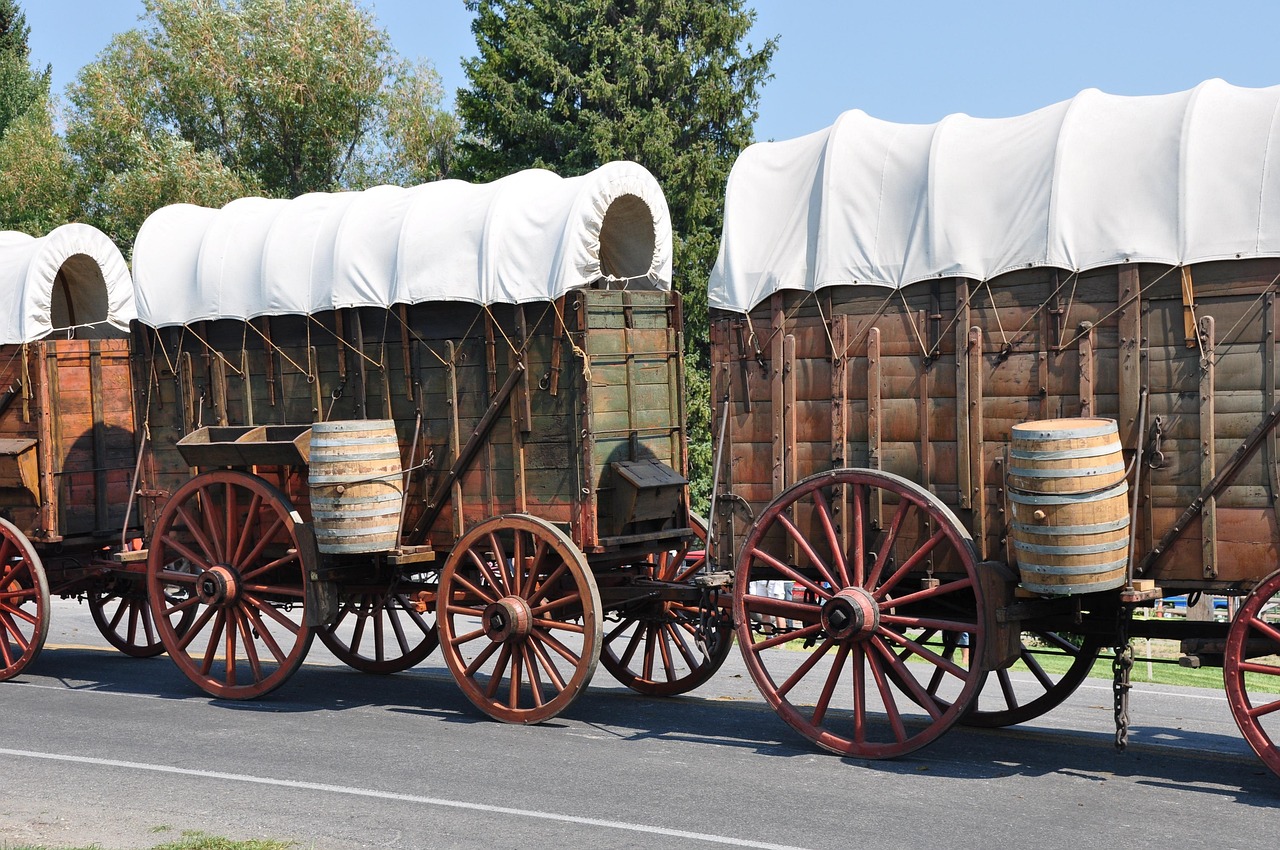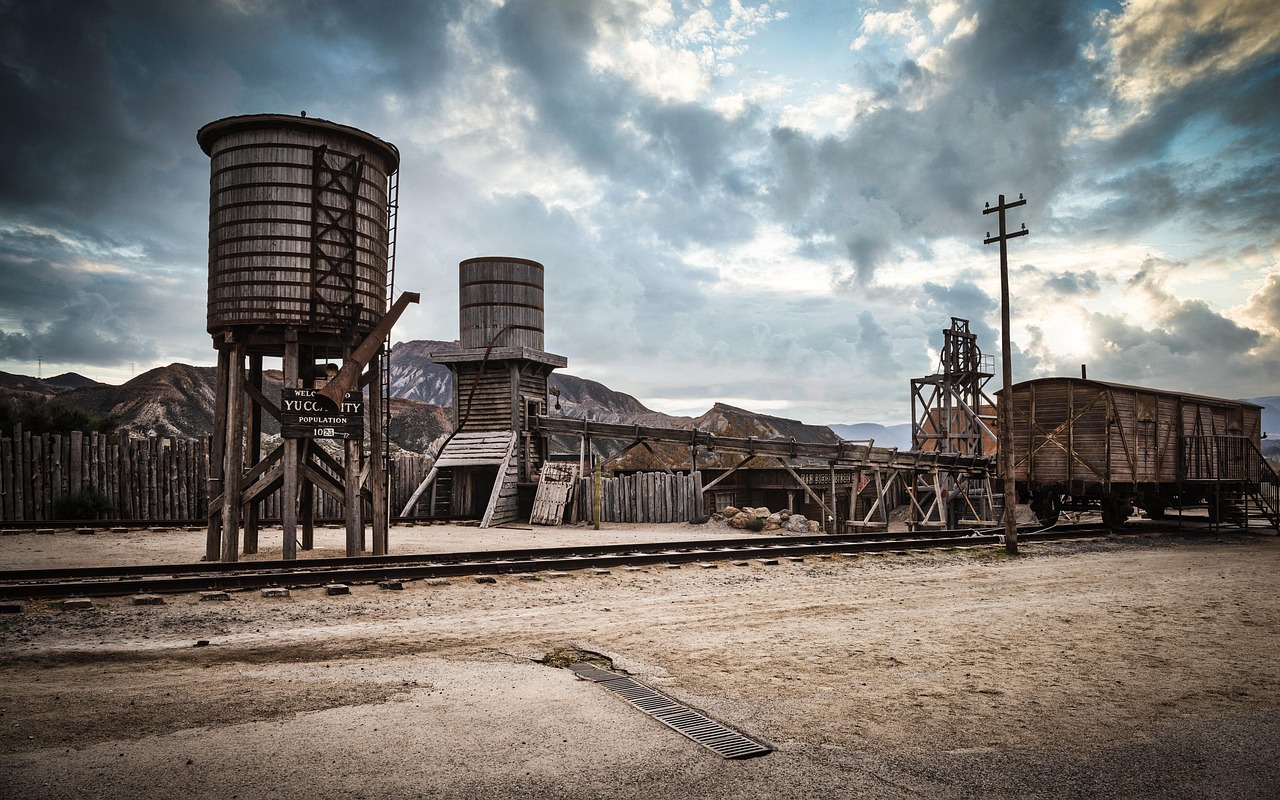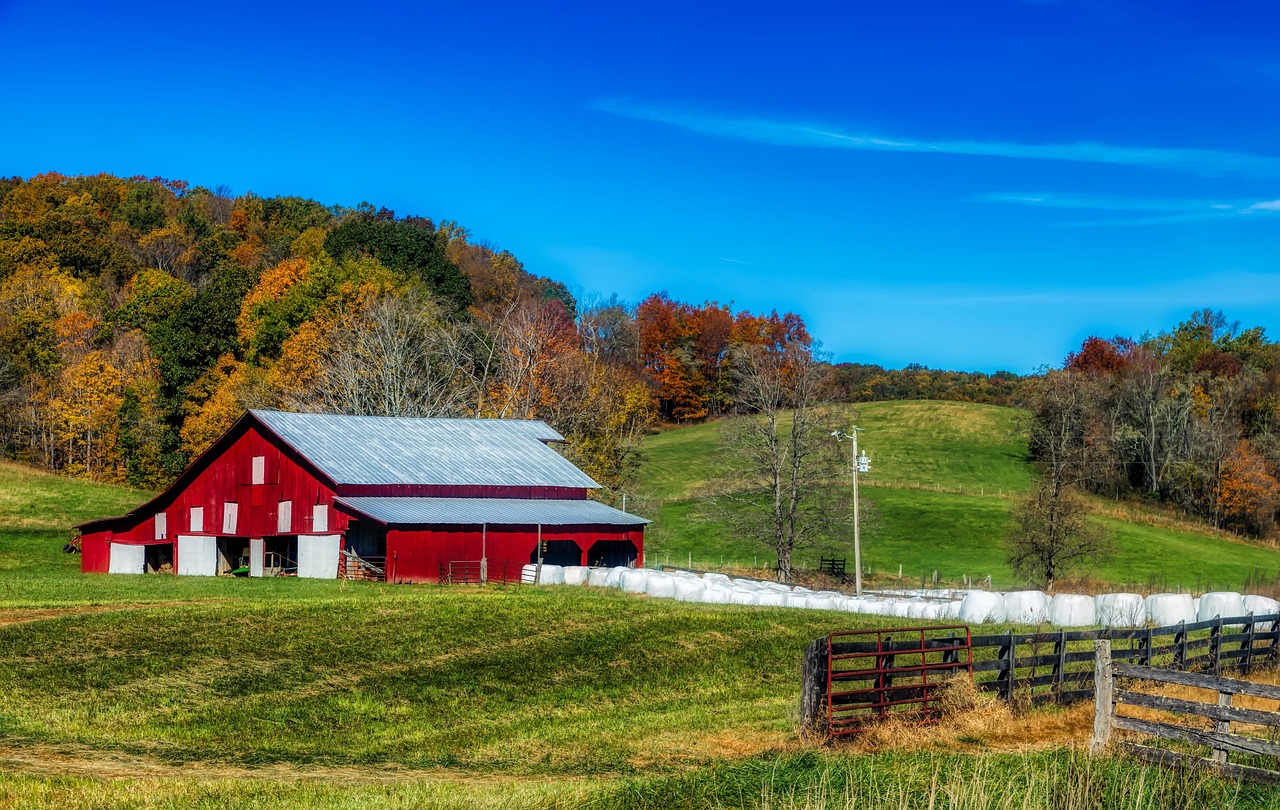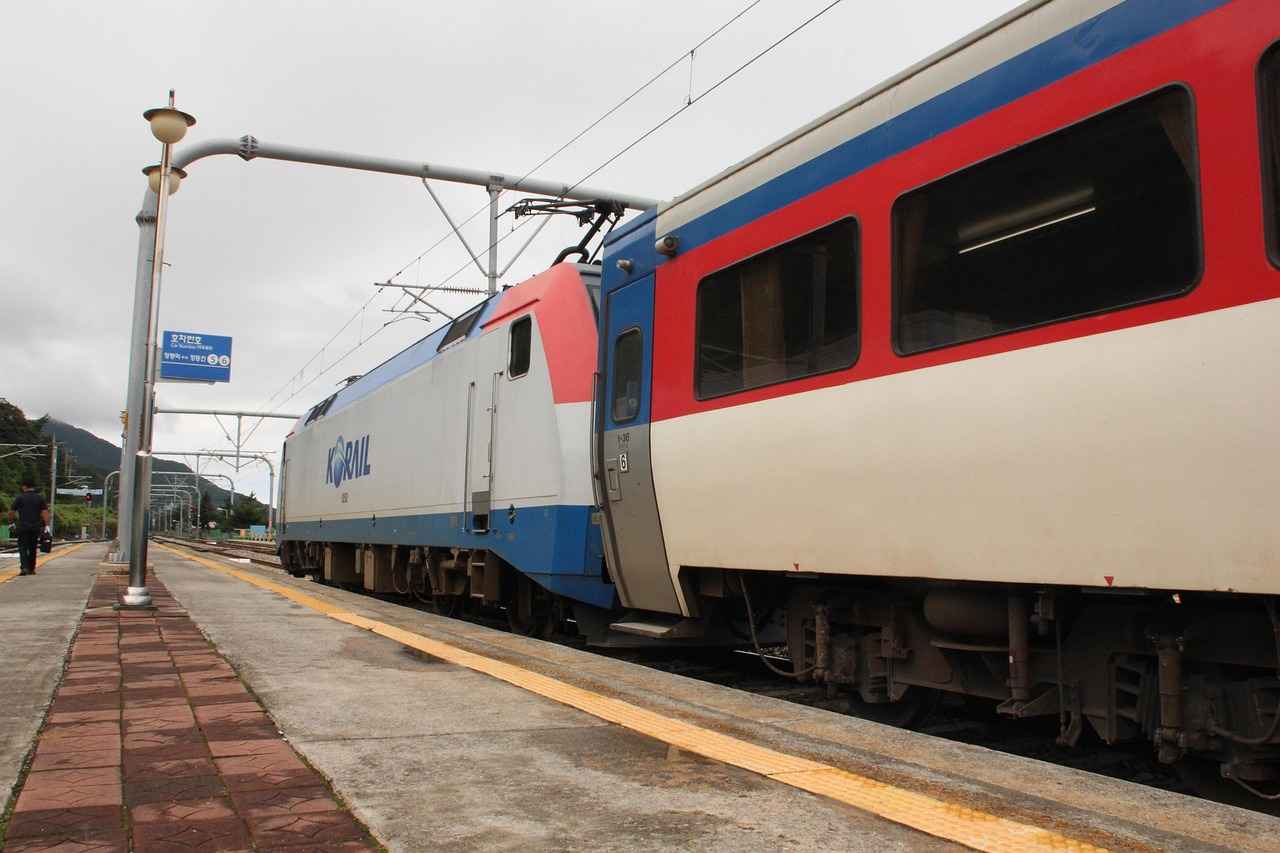This article delves into the crucial role that West Bengal plays in shaping India’s national economy. By examining its industries, agriculture, trade, and cultural contributions, we gain a comprehensive understanding of its influence on the broader economic landscape.
Historical Context of West Bengal’s Economy
West Bengal’s economic journey has been shaped by its rich history. From the colonial era, where it emerged as a center for trade and commerce, to its current position as a hub for various industries, understanding this context is vital for appreciating its economic significance today.
Key Industries Driving West Bengal’s Economy
- Textiles: One of the oldest industries, it remains a pillar of employment and economic activity.
- Jute: West Bengal is the largest producer of jute in India, playing a vital role in both local and national economies.
- Information Technology: A growing sector that contributes significantly to innovation and job creation.
Agricultural Contributions of West Bengal
Agriculture is fundamental to West Bengal’s economy. The state is renowned for its production of rice, potatoes, and fish, which are essential for food security and employment.
West Bengal’s Role in Trade and Commerce
Strategically located, West Bengal boasts robust infrastructure that enhances its trade capabilities. Major trade routes, including ports and railways, facilitate the efficient movement of goods.
Cultural Contributions to the Economy
The rich cultural heritage of West Bengal, encompassing arts, literature, and festivals, significantly contributes to tourism and economic diversity. Tourism alone generates substantial revenue and employment opportunities.
Conclusion: The Future of West Bengal’s Economy
Looking ahead, West Bengal’s economic prospects appear promising. With its diverse industries, strong agricultural base, and vibrant culture, the state is poised to remain a critical player in India’s national economy.

Historical Context of West Bengal’s Economy
Understanding the historical development of West Bengal’s economy is crucial for grasping its current economic status and contributions to India. The state’s economic journey is deeply intertwined with its rich cultural heritage, colonial history, and post-independence reforms. This article delves into the evolution of West Bengal’s economy, highlighting key phases that have shaped its present landscape.
Historically, West Bengal was a significant hub during the British colonial era, primarily due to its strategic location and natural resources. The establishment of the jute industry in the 19th century marked the beginning of industrialization, positioning the state as a major player in the global market. The jute trade not only provided employment but also laid the foundation for subsequent industrial growth.
Post-independence, West Bengal faced numerous challenges, including political unrest and economic instability. However, the state’s commitment to agriculture and industrial diversification helped it recover. The Green Revolution in the 1960s significantly boosted agricultural productivity, making West Bengal one of India’s leading rice producers. This agricultural strength has been pivotal in ensuring food security and supporting the livelihoods of millions.
In recent decades, the state has embraced modernization and technology, particularly in sectors like information technology and manufacturing. The government’s initiatives to promote entrepreneurship and attract investment have further stimulated economic growth. Despite facing challenges such as infrastructural bottlenecks and regulatory hurdles, West Bengal continues to evolve, striving to enhance its position in India’s national economy.
In conclusion, the historical context of West Bengal’s economy reveals a dynamic narrative of resilience and adaptation. By understanding this evolution, one can better appreciate the state’s current role and contributions to the broader economic framework of India.

Key Industries Driving West Bengal’s Economy
West Bengal is a state that exemplifies industrial diversity, playing a crucial role in India’s economic framework. The state is renowned for its rich tapestry of industries, each contributing uniquely to its economic growth. Among these, the textile, jute, and information technology sectors stand out as pivotal players.
The Textile Industry
The textile industry in West Bengal is one of the oldest in India, characterized by its vibrant heritage and substantial employment opportunities. This sector not only produces traditional fabrics but also modern garments, catering to both domestic and international markets. The state’s textile output significantly contributes to the national economy, making it a cornerstone of West Bengal’s industrial landscape.
The Jute Industry
West Bengal is the leading producer of jute in India, which is often referred to as the “golden fiber.” The jute industry not only supports local farmers but also creates numerous jobs in processing and export. The demand for eco-friendly products has revitalized the jute sector, positioning it as a sustainable alternative in the global market.
Information Technology Sector
In recent years, West Bengal has emerged as a hub for information technology, driven by a skilled workforce and supportive government policies. The IT sector has attracted numerous startups and established companies, contributing significantly to the state’s GDP. The growth of this industry has also led to increased job creation, particularly for the youth.
Challenges and Opportunities
Despite the strengths of these industries, West Bengal faces challenges such as competition from other states, infrastructural bottlenecks, and the need for modernization. However, with ongoing government initiatives and investments, there are promising opportunities for growth and innovation in these key sectors.
In conclusion, the diverse industrial landscape of West Bengal, encompassing textiles, jute, and information technology, is integral to its economic vitality. By addressing the challenges and leveraging opportunities, West Bengal can continue to thrive as a significant contributor to India’s national economy.
The Textile Industry in West Bengal
is not just a sector; it is a vibrant tapestry woven into the very fabric of the state’s identity. With a history that dates back centuries, West Bengal’s textile industry stands as one of the most significant contributors to both the regional and national economy. Renowned for its exquisite craftsmanship, the industry encompasses a wide range of products, including cotton, silk, and handloom textiles.
This sector is pivotal in providing employment opportunities to millions, particularly in rural areas where traditional weaving and dyeing practices are preserved. The state’s artisans are celebrated for their skills, creating unique pieces that reflect the rich cultural heritage of West Bengal. The vibrant colors and intricate designs of products such as tant sarees and baluchari sarees have gained recognition not only in India but also on international platforms.
However, the textile industry is not without its challenges. Factors such as global competition, rising production costs, and the need for modernization pose significant hurdles. To remain competitive, many manufacturers are adopting innovative technologies and sustainable practices. This shift not only enhances productivity but also aligns with global trends towards eco-friendly fashion.
Moreover, government initiatives aimed at revitalizing the textile sector are underway. Programs focused on skill development, financial support, and infrastructure improvements are designed to bolster the industry’s growth. As the market evolves, there is a growing emphasis on export potential, which could further enhance West Bengal’s position as a key player in the global textile arena.
In conclusion, the textile industry in West Bengal is a crucial component of the state’s economy, rich in heritage and potential. With ongoing efforts to overcome challenges and embrace innovation, the future of this industry looks promising, ensuring that it continues to be a significant source of employment and cultural pride.
Challenges Faced by the Textile Sector
The textile industry in West Bengal, while historically significant and a major contributor to the state’s economy, is currently navigating a landscape filled with various challenges that threaten its sustainability and growth. The following sections delve into these challenges, offering insights into their implications for the industry.
- Intense Competition: The textile sector in West Bengal faces fierce competition not only from other Indian states but also from international markets. Countries like Bangladesh and Vietnam have become formidable players due to lower production costs, which puts pressure on local manufacturers to innovate and reduce prices.
- Modernization Needs: Many textile units in West Bengal are still using outdated machinery and production techniques. This lack of modernization hinders productivity and efficiency, making it difficult for these units to compete with technologically advanced manufacturers.
- Skilled Labor Shortage: Despite the rich heritage of textile craftsmanship in the region, there is a growing shortage of skilled labor. Younger generations are increasingly moving away from traditional textile jobs in search of more lucrative opportunities in other sectors, leading to a decline in expertise.
- Environmental Regulations: The textile industry is under increasing scrutiny due to its environmental impact. Stricter regulations regarding waste management and pollution control require significant investment in sustainable practices, which can be challenging for smaller enterprises.
- Supply Chain Disruptions: The COVID-19 pandemic highlighted vulnerabilities in global supply chains. Disruptions in the supply of raw materials and logistics have made it challenging for manufacturers to maintain consistent production levels.
Addressing these challenges is crucial for the revitalization of West Bengal’s textile industry. Stakeholders must focus on innovation, skill development, and sustainability to ensure that this vital sector not only survives but thrives in the competitive global market.
Future Prospects for the Textile Industry
The textile industry in West Bengal is on the brink of transformation, driven by a combination of innovations and government initiatives. These efforts aim to not only enhance productivity but also to bolster the state’s global competitiveness in the textile market.
Recent advancements in technology have paved the way for the adoption of modern manufacturing processes. This includes the integration of automation and digitalization in production lines, which significantly reduces operational costs and increases output efficiency. For instance, the use of smart textiles and sustainable materials is becoming more prevalent, appealing to eco-conscious consumers and opening up new market opportunities.
| Innovation Type | Description |
|---|---|
| Automation | Implementation of machinery to streamline production processes. |
| Sustainable Practices | Utilizing eco-friendly materials and processes to reduce environmental impact. |
| Digital Marketing | Leveraging online platforms to reach a wider audience and boost sales. |
On the policy front, the government is introducing various initiatives aimed at supporting the textile sector. These include financial incentives for small and medium enterprises (SMEs), as well as skill development programs to equip the workforce with necessary technical skills. Such measures are crucial for maintaining a competitive edge in a rapidly evolving global market.
- Financial Support: Grants and subsidies for modernization.
- Skill Development: Training programs for workers to enhance productivity.
- Market Access: Initiatives to help local manufacturers access international markets.
In conclusion, the future prospects for the textile industry in West Bengal are bright, characterized by innovation and proactive government support. By embracing new technologies and fostering a skilled workforce, the industry is well-positioned to enhance its productivity and competitiveness on a global scale.
The Jute Industry’s Role in the Economy
West Bengal stands out as a pioneering force in the jute industry, which plays a crucial role in both the local and national economies of India. As the largest producer of jute in the country, West Bengal contributes significantly to the agricultural sector, providing employment opportunities and enhancing export revenues.
Historically, the jute industry has been a cornerstone of West Bengal’s economy. The state accounts for over 90% of India’s jute production, making it a vital player in the global jute market. The cultivation and processing of jute not only support local farmers but also create numerous jobs in manufacturing and trade.
| Key Contributions of the Jute Industry | Impact |
|---|---|
| Job Creation | Provides employment to millions in rural areas |
| Export Revenue | Generates significant foreign exchange earnings |
| Sustainable Development | Promotes eco-friendly products and practices |
The jute industry not only focuses on traditional products like jute bags and ropes but also embraces innovation by developing biodegradable packaging solutions. This shift towards sustainability aligns with global trends, enhancing the marketability of jute products.
Despite its strengths, the jute industry faces challenges such as fluctuating prices, competition from synthetic alternatives, and the need for modernization. Addressing these issues through government support and investment in technology is essential for the industry’s growth.
Looking ahead, the future of the jute industry in West Bengal appears promising. With increasing awareness about environmental sustainability, the demand for jute products is likely to rise. By leveraging its historical strengths and adapting to modern market needs, West Bengal can continue to be a leader in the jute sector.
Conclusion: The jute industry is integral to West Bengal’s economy, contributing to job creation, export revenues, and sustainable practices. As the industry evolves, it holds the potential to enhance economic stability and growth in the region.

Agricultural Contributions of West Bengal
Agriculture is not just a sector in West Bengal; it is the backbone of the state’s economy. This region is renowned for its fertile land and favorable climatic conditions, making it one of the leading agricultural states in India. The cultivation of rice, potatoes, and fish plays a pivotal role in supporting the livelihoods of millions and ensuring food security for the population.
The state’s agricultural landscape is characterized by its diverse production systems. West Bengal is the largest producer of rice in India, contributing significantly to the national food supply. The state’s farmers employ both traditional and modern farming techniques to enhance productivity. Potatoes are another critical crop, with West Bengal being one of the top producers in the country. The favorable climatic conditions allow for multiple cropping seasons, maximizing yield.
Moreover, fishing is an integral part of the agricultural economy in West Bengal. The state boasts an extensive network of rivers and water bodies, providing ample opportunities for aquaculture. Fish farming not only contributes to the state’s economy but also plays a vital role in the nutrition of its residents.
To further enhance agricultural productivity, the government has implemented various policies aimed at supporting farmers. These include subsidies for seeds and fertilizers, access to credit, and initiatives for sustainable farming practices. Such measures are crucial for maintaining the economic stability of the region.
In conclusion, agriculture in West Bengal is a dynamic sector that significantly impacts the state’s economy. The cultivation of rice, potatoes, and fish not only sustains livelihoods but also strengthens food security. As the state continues to innovate and adapt to challenges, its agricultural sector remains a vital contributor to both local and national economies.
Rice Production in West Bengal
is a vital aspect of the state’s agricultural landscape, contributing significantly to both local and national food security. As one of the largest rice producers in India, West Bengal plays a crucial role in ensuring a stable food supply while promoting agricultural sustainability.
The state’s favorable climatic conditions, along with its extensive river systems, create an ideal environment for rice cultivation. West Bengal’s fertile alluvial soil and abundant water resources allow farmers to produce high-yield varieties of rice, making it a leading state in terms of production volume.
- Major Rice Varieties: The state is known for its diverse rice varieties, including the aromatic Basmati and the popular Gobindobhog.
- Farming Techniques: Traditional methods are often supplemented with modern agricultural practices, enhancing productivity and sustainability.
- Employment Opportunities: The rice industry provides employment to millions of people, from farmers to workers in processing units.
Government initiatives aimed at improving agricultural practices have made a significant impact on rice production in West Bengal. Programs focusing on irrigation, seed quality, and pest management have helped farmers increase their yields and maintain soil health.
Despite these advancements, challenges remain. Issues such as climate change, fluctuating market prices, and the need for modernization in farming techniques pose threats to the sustainability of rice production. Farmers are urged to adopt climate-resilient practices to combat these challenges effectively.
In conclusion, West Bengal’s rice production is not merely an agricultural activity; it is a cornerstone of the state’s economy and a critical component of India’s food security framework. As the state continues to innovate and adapt, its role in the national and global rice market is likely to strengthen, ensuring a sustainable future for its agricultural sector.
Impact of Agricultural Policies
Agricultural policies in West Bengal are crucial for fostering both productivity and sustainability. The state’s government has implemented various strategies aimed at enhancing agricultural output, which directly influences the economic stability of the region. These policies not only support farmers but also contribute to the overall growth of the state’s economy.
Government Initiatives for Agricultural Growth
- Subsidies for fertilizers and seeds to reduce costs for farmers.
- Investment in irrigation infrastructure to ensure consistent water supply.
- Training programs for farmers on sustainable practices and crop diversification.
Enhancing Productivity through Technology
Modern agricultural practices, including the use of precision farming and biotechnology, have been promoted by the government to increase crop yields. The introduction of high-yield variety seeds and advanced irrigation techniques has significantly boosted productivity levels. These advancements not only help in meeting local food demands but also position West Bengal as a key player in national food security.
Sustainability and Environmental Considerations
Alongside productivity, the emphasis on sustainability is evident in the policies aimed at reducing environmental impact. Initiatives such as organic farming and integrated pest management are being encouraged to promote eco-friendly practices. This dual focus on productivity and sustainability ensures that agricultural practices do not compromise the health of the land and resources for future generations.
Economic Impact on West Bengal
The positive outcomes of these agricultural policies are reflected in the economic stability of West Bengal. By increasing agricultural output, the state not only secures the livelihoods of millions of farmers but also enhances its contribution to the national economy. The ripple effect of improved agricultural productivity leads to job creation, increased income levels, and a stronger rural economy.
In conclusion, the government policies aimed at enhancing agricultural productivity and sustainability are pivotal for the economic stability of West Bengal. By focusing on both immediate agricultural needs and long-term sustainability, these initiatives lay the groundwork for a resilient economy that can adapt to future challenges.

West Bengal’s Role in Trade and Commerce
West Bengal stands out as a vital hub for trade and commerce in India, thanks to its strategic geographical location and robust infrastructure. This state serves as a gateway to not only the northeastern states of India but also to neighboring countries like Bangladesh, Nepal, and Bhutan. The combination of these factors positions West Bengal as a key player in both regional and international trade.
One of the primary assets of West Bengal is its extensive network of transportation infrastructure. The state is home to the Port of Kolkata, one of the oldest and most significant ports in India, which handles a substantial portion of the country’s cargo traffic. Additionally, West Bengal boasts a well-developed railway network that connects major cities and industrial zones, facilitating efficient movement of goods across the region.
| Infrastructure Component | Importance |
|---|---|
| Port of Kolkata | Handles significant cargo traffic, connecting to global markets |
| Railway Network | Facilitates efficient goods movement across states |
| Road Connectivity | Enhances accessibility for trade and commerce |
Moreover, the state government has implemented various initiatives aimed at boosting trade, such as the establishment of Special Economic Zones (SEZs) and investment in logistics parks. These efforts are designed to attract both domestic and foreign investments, thereby enhancing the state’s economic landscape.
However, despite these advantages, West Bengal also faces several challenges in its trade and commerce sectors. Regulatory hurdles, bureaucratic inefficiencies, and infrastructural bottlenecks can impede trade efficiency. Addressing these challenges is crucial for the state to fully realize its potential as a trade hub.
In conclusion, West Bengal’s strategic location combined with its robust infrastructure provides a solid foundation for its role in trade and commerce. By continuing to improve its infrastructure and addressing existing challenges, West Bengal can further enhance its position as a pivotal player in both regional and international markets.
Major Trade Routes and Infrastructure
West Bengal’s strategic location in eastern India plays a crucial role in its trade dynamics. The state is well-connected through a network of ports, railways, and roadways, which facilitate the efficient movement of goods. This connectivity not only enhances West Bengal’s trade capabilities but also positions it as a pivotal hub for both domestic and international commerce.
Port Infrastructure
West Bengal is home to the Port of Kolkata, one of the oldest and most significant ports in India. This port serves as a gateway for trade with Southeast Asia and beyond. It handles a substantial volume of cargo, including bulk commodities, containers, and liquid cargo. The port’s facilities are continuously upgraded to accommodate larger vessels and improve turnaround times, thereby enhancing trade efficiency.
Railway Connectivity
The state boasts an extensive railway network that links major cities and industrial hubs. The Eastern Railway Zone operates various freight and passenger services, ensuring timely delivery of goods. This railway infrastructure is vital for transporting agricultural products, textiles, and jute, which are significant contributors to the state’s economy.
Road Transport
In addition to railways and ports, West Bengal’s road network is crucial for intra-state and inter-state trade. Major highways connect the state to neighboring regions, facilitating the movement of goods to and from markets. The development of national highways has further improved access to rural areas, enabling farmers and small businesses to reach larger markets.
Challenges in Trade Infrastructure
Despite its advantages, West Bengal faces challenges such as regulatory hurdles and infrastructural bottlenecks. These issues can impede the efficiency of trade operations. Addressing these challenges through policy reforms and investment in infrastructure is essential to enhance the state’s competitive edge in trade.
In conclusion, West Bengal’s trade routes and infrastructure play a vital role in enhancing its trade capabilities. The combination of a well-developed port system, extensive railway network, and robust road transport ensures that West Bengal remains a key player in India’s economic landscape.
Challenges in Trade and Commerce
West Bengal, despite its strategic advantages and vibrant economic landscape, faces a myriad of challenges that impede its trade and commerce. These obstacles not only affect local businesses but also have broader implications for the state’s integration into the national and global markets.
- Regulatory Hurdles: The complex regulatory environment in West Bengal can create confusion and delays for businesses. Compliance with various laws and regulations often requires significant time and resources, which can deter investment and slow down trade processes.
- Infrastructural Bottlenecks: Although West Bengal has made strides in developing its infrastructure, there are still critical gaps. Poor road conditions, inadequate railway connectivity, and congested ports can lead to inefficiencies in the supply chain, resulting in increased costs and delayed deliveries.
- Logistical Challenges: The logistics sector in West Bengal is underdeveloped compared to other states. This lack of efficient logistics solutions can hinder the movement of goods, making it difficult for businesses to meet market demands promptly.
- Market Access Issues: Small and medium enterprises (SMEs) often struggle to access larger markets due to limited resources and lack of exposure. This can restrict their growth potential and reduce their contribution to the state’s economy.
- Competition from Neighboring States: West Bengal faces stiff competition from neighboring states that may offer better infrastructure or more favorable business environments. This can result in businesses relocating or expanding elsewhere, further impacting West Bengal’s economic prospects.
Addressing these challenges is crucial for enhancing trade efficiency in West Bengal. By streamlining regulations, improving infrastructure, and supporting local businesses, the state can unlock its full economic potential and strengthen its position as a key player in India’s trade landscape.

Cultural Contributions to the Economy
West Bengal’s Cultural Contributions to the Economy
West Bengal, a state renowned for its vibrant culture, plays a pivotal role in enhancing the economic landscape of India. The state’s rich cultural heritage encompasses a myriad of elements, including arts, literature, and festivals, all of which significantly contribute to its tourism industry and, consequently, its economic diversity.
The Significance of Arts and Literature
The arts and literature of West Bengal are not merely cultural expressions; they are vital economic drivers. The state has produced numerous acclaimed authors, poets, and artists whose works attract both domestic and international audiences. Festivals celebrating literature, such as the Kolkata Book Fair, draw thousands of visitors each year, generating substantial revenue for local businesses.
Festivals as Economic Catalysts
Festivals in West Bengal, such as Durgapuja and Poush Mela, not only showcase the state’s rich traditions but also act as significant economic catalysts. These events foster tourism, providing opportunities for local artisans, vendors, and hospitality businesses. The influx of tourists during these festivals creates a surge in demand for various services, thereby enhancing the local economy.
Tourism and Its Economic Impact
The tourism sector in West Bengal is deeply intertwined with its cultural offerings. Attractions such as Darjeeling, Sundarbans, and historical sites in Kolkata draw millions of visitors annually. This influx not only boosts revenue through direct spending but also creates employment opportunities in various sectors, including hospitality, transportation, and retail.
Promoting Cultural Industries
Efforts to promote cultural industries, such as handicrafts and traditional music, can further enhance economic growth. By showcasing West Bengal’s unique heritage to a global audience, the state can attract investments and partnerships that benefit local artisans and entrepreneurs.
Conclusion
In conclusion, West Bengal’s cultural contributions are integral to its economic framework. By leveraging its rich heritage, the state not only enriches its cultural landscape but also fosters economic growth, making it a vital player in India’s national economy.
The Impact of Tourism on the Economy
Tourism is a vital component of West Bengal’s economy, significantly contributing to its growth and development. The state’s rich cultural heritage, diverse landscapes, and historical landmarks attract millions of visitors each year, making it a prime destination for both domestic and international tourists.
Economic Contributions of Tourism
- Revenue Generation: Tourism is a major source of revenue for West Bengal, contributing billions to the state’s GDP. The influx of tourists leads to increased spending in various sectors such as hospitality, transportation, and local markets.
- Employment Opportunities: The tourism sector provides direct and indirect employment to millions of people. From hotel staff to tour guides, the job opportunities created by tourism help improve the livelihoods of many families.
- Infrastructure Development: The growth of tourism has led to significant investments in infrastructure, including roads, airports, and public transportation systems. These developments benefit not only tourists but also local communities.
Cultural Attractions Driving Tourism
West Bengal is home to numerous cultural attractions that draw visitors from all over the world. Key sites include:
- Kolkata: Known for its colonial architecture, vibrant arts scene, and festivals, Kolkata is often referred to as the cultural capital of India.
- Darjeeling: Famous for its tea plantations and stunning views of the Himalayas, this hill station attracts nature lovers and adventure seekers.
- Sundarbans: The largest mangrove forest in the world, a UNESCO World Heritage site, offers unique wildlife experiences, including the chance to see the Royal Bengal Tiger.
Challenges Facing the Tourism Sector
Despite its potential, the tourism industry in West Bengal faces several challenges:
- Environmental Concerns: Increased tourist activity can lead to environmental degradation, particularly in sensitive areas like the Sundarbans.
- Infrastructure Strain: Rapid growth in tourism can strain existing infrastructure, leading to overcrowding and reduced quality of services.
Conclusion
In summary, tourism plays a critical role in shaping West Bengal’s economy by generating revenue, creating jobs, and fostering infrastructure development. By addressing the challenges faced by the sector and promoting sustainable practices, West Bengal can further enhance its position as a leading tourist destination in India.
Promoting Cultural Industries
in West Bengal is a vital strategy for enhancing the state’s economic growth while simultaneously preserving its rich heritage. The cultural landscape of West Bengal, characterized by its vibrant arts, literature, music, and festivals, has the potential to attract global attention and investment.
The promotion of cultural industries not only serves to showcase West Bengal’s unique traditions but also creates numerous economic opportunities. By leveraging its historical and cultural assets, the state can develop a robust tourism sector that generates significant revenue. Tourists are increasingly seeking authentic experiences, and West Bengal’s diverse cultural offerings can meet this demand effectively.
- Art and Craft: The traditional crafts of West Bengal, such as Kantha embroidery and Terracotta art, can be marketed to both local and international markets, boosting artisans’ livelihoods.
- Performing Arts: The rich tradition of Baul music and theatre arts can be promoted through festivals and cultural events, attracting visitors and creating jobs.
- Culinary Heritage: West Bengal’s unique cuisine, known for its flavors and variety, can be a focal point for culinary tourism, enhancing the state’s economic prospects.
Furthermore, government initiatives aimed at supporting cultural industries can play a crucial role in this growth. By providing funding, training, and marketing support, the state can empower local artists and entrepreneurs, fostering innovation and sustainability in these sectors.
In conclusion, the strategic promotion of cultural industries in West Bengal presents a dual opportunity: it can significantly boost the state’s economy while preserving and showcasing its rich cultural heritage. By embracing this approach, West Bengal can position itself as a leader in cultural tourism, attracting a global audience eager to experience its unique offerings.
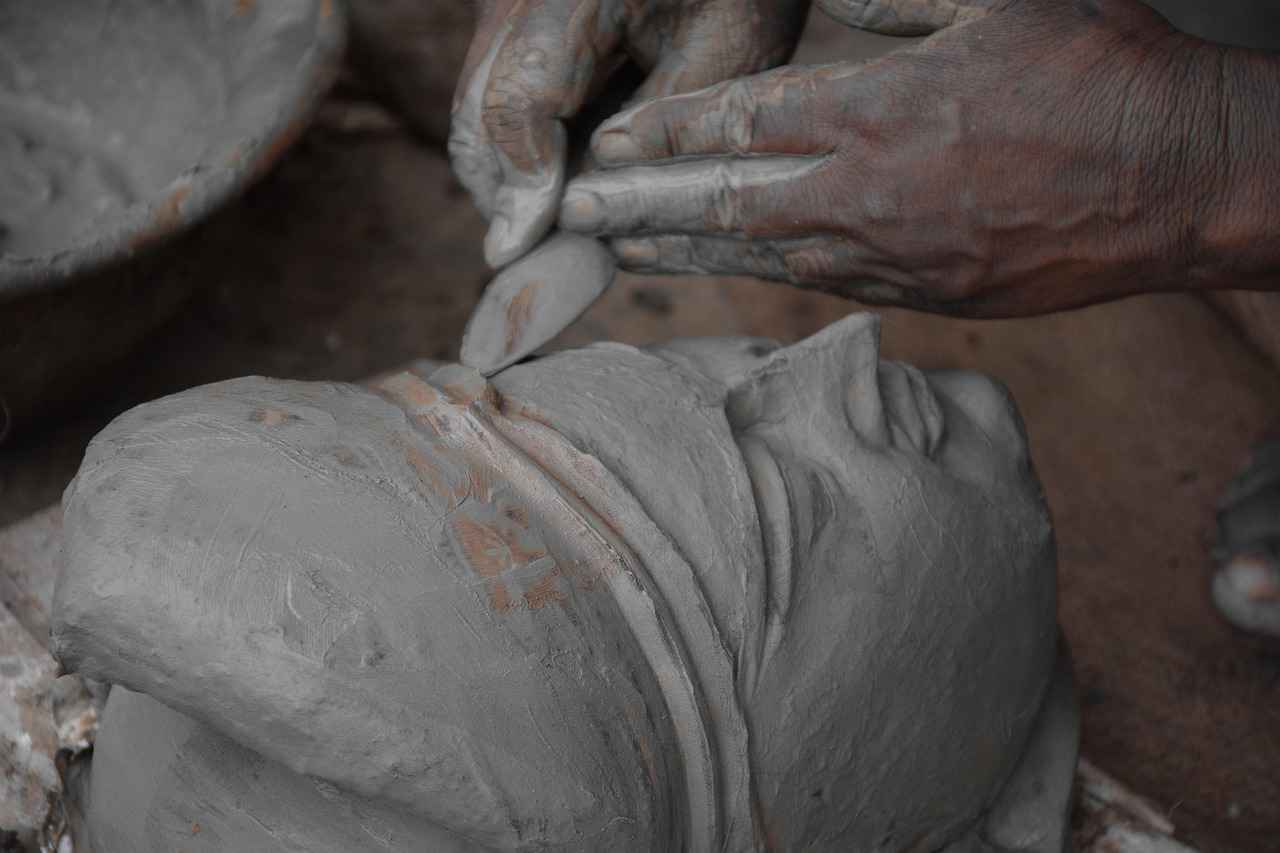
Conclusion: The Future of West Bengal’s Economy
West Bengal’s economic future is not only promising but also pivotal for the broader landscape of India’s national economy. This state, rich in cultural heritage and endowed with diverse resources, is emerging as a significant player across various sectors.
Historically, West Bengal has been a hub for agriculture and industry. Its fertile lands yield a variety of crops, making it one of the top producers of rice and potatoes in the nation. The agricultural strength of West Bengal underpins its economy, supporting millions of livelihoods and contributing to food security.
In addition to agriculture, West Bengal’s industrial landscape is diverse, featuring key sectors such as textiles, jute, and information technology. The textile industry, in particular, is renowned for its rich heritage and continues to be a major employer. However, it faces challenges such as modernization and competition that require innovative solutions.
Trade and commerce play a vital role in the state’s economic framework. West Bengal’s strategic location, with access to significant trade routes and ports, enhances its ability to engage in both regional and international markets. Yet, regulatory hurdles and infrastructural issues remain obstacles that need addressing to fully capitalize on its potential.
The state’s cultural richness also adds a unique dimension to its economy. Festivals, arts, and literature not only enrich the local community but also attract tourism, creating additional revenue streams. Promoting these cultural industries can further enhance economic growth and showcase West Bengal’s unique identity on a global stage.
In conclusion, the future of West Bengal’s economy appears bright, driven by its diverse industries, robust agricultural sector, and rich cultural heritage. With the right policies and innovative strategies, West Bengal is poised to strengthen its position as a key player in India’s national economy.
Frequently Asked Questions
- What are the main industries in West Bengal?
West Bengal’s economy is driven by several key industries, including textiles, jute, and information technology. The textile sector, in particular, has a rich heritage and provides substantial employment opportunities.
- How does agriculture contribute to West Bengal’s economy?
Agriculture is a cornerstone of West Bengal’s economy, with rice, potatoes, and fish being significant products. The state is one of India’s largest rice producers, playing a vital role in food security and livelihoods.
- What challenges does West Bengal face in trade?
Despite its strategic location and robust infrastructure, West Bengal faces challenges such as regulatory hurdles and infrastructural bottlenecks that can hinder trade efficiency.
- How does tourism impact West Bengal’s economy?
Tourism, fueled by the state’s rich cultural heritage, significantly contributes to the economy by generating revenue and creating job opportunities. Festivals and cultural attractions draw visitors from around the globe.
- What are the future prospects for West Bengal’s economy?
The future of West Bengal’s economy looks promising, with innovations in various sectors and government initiatives aimed at enhancing productivity and global competitiveness.
